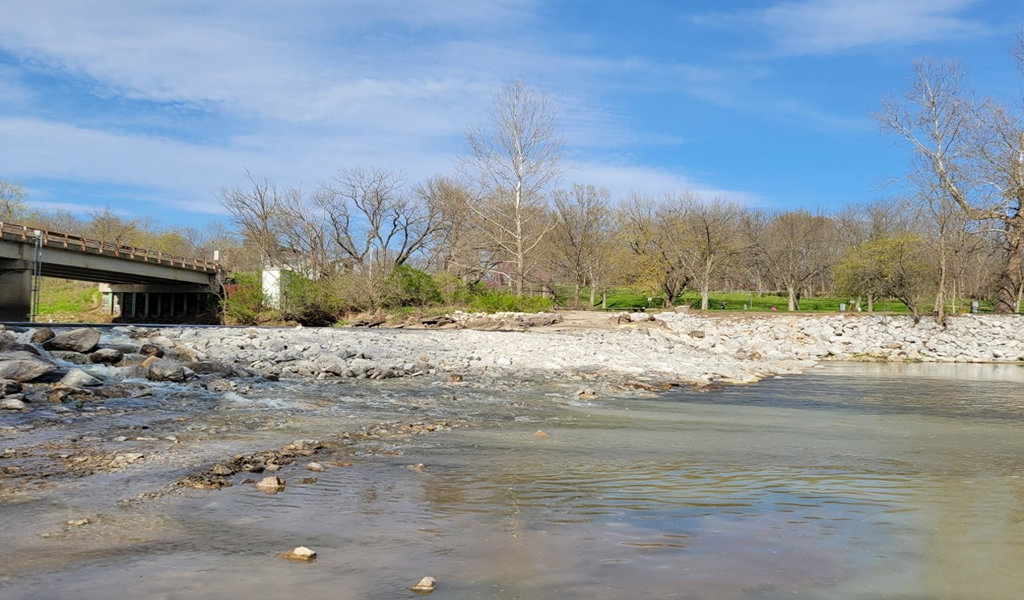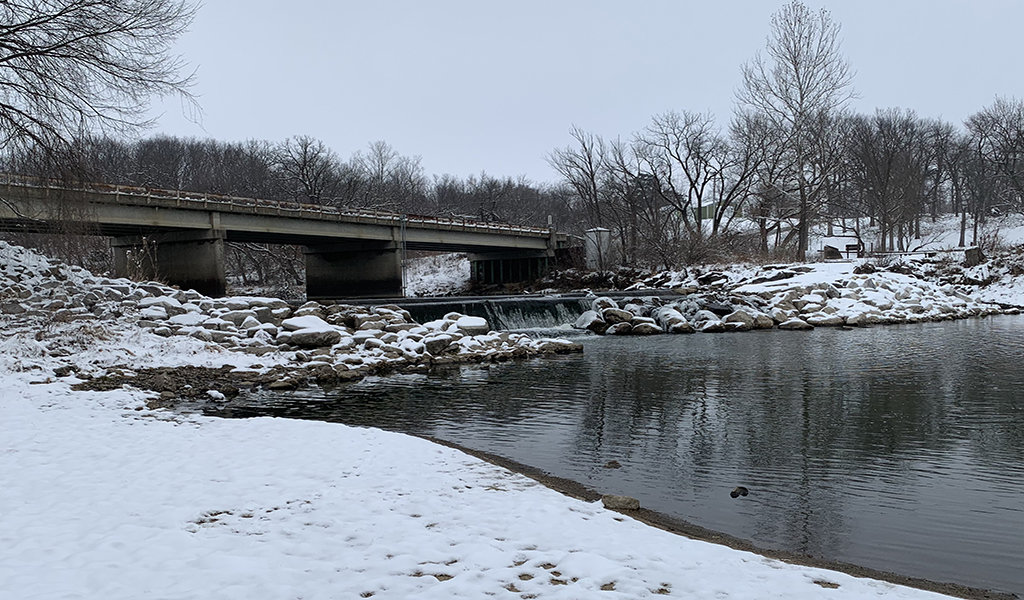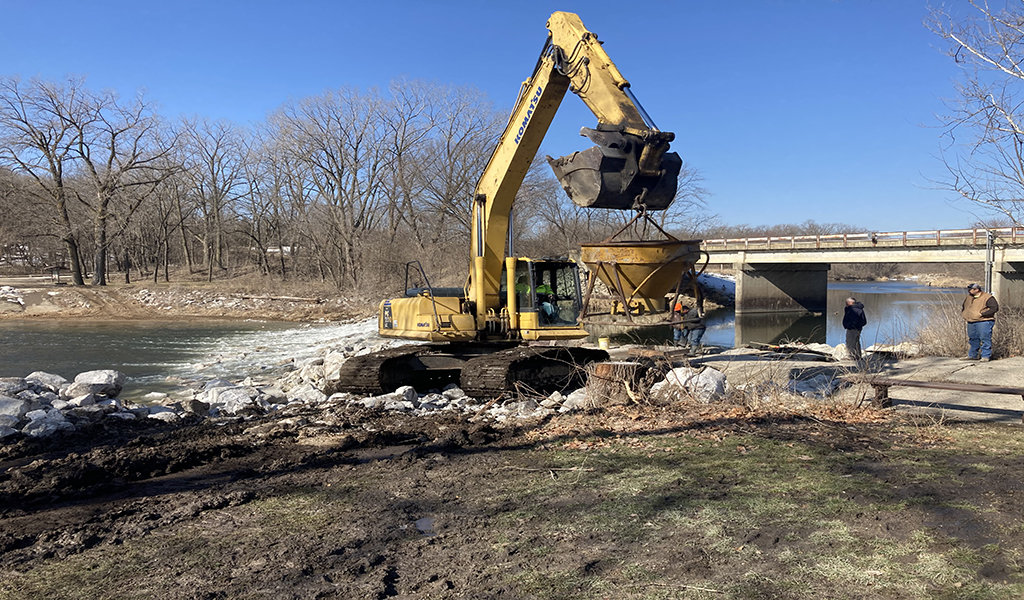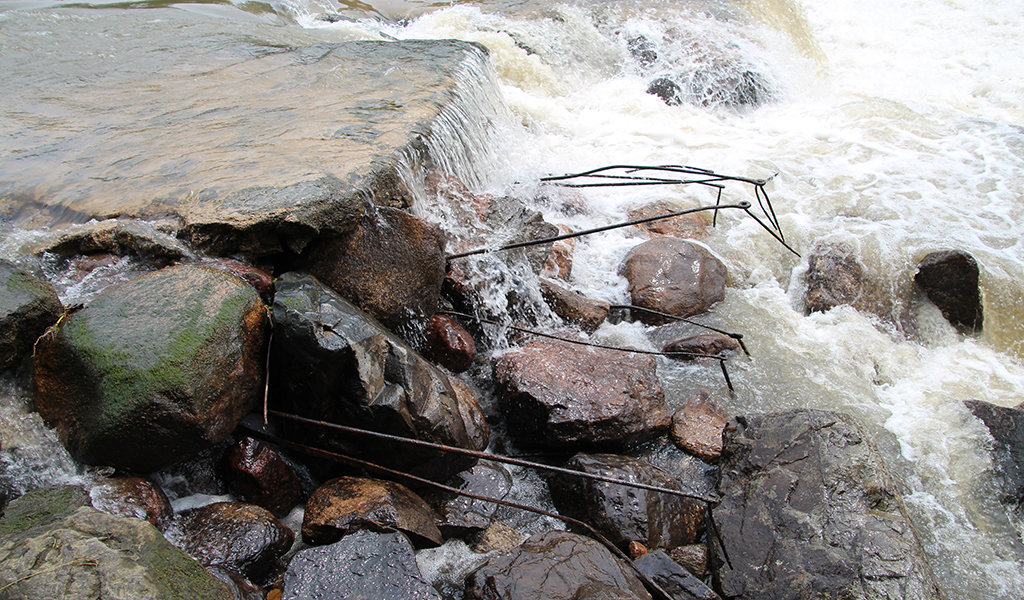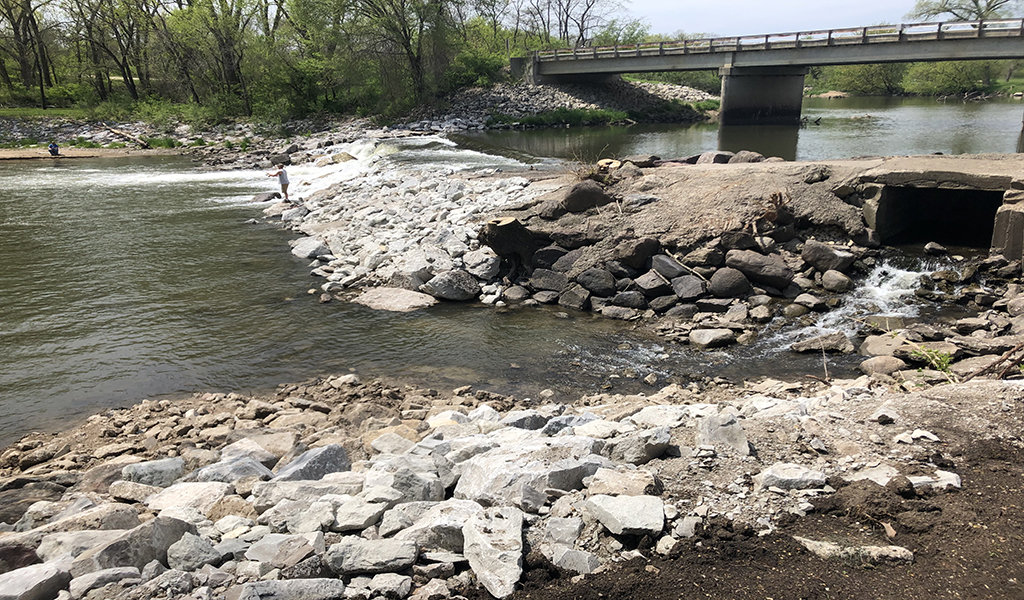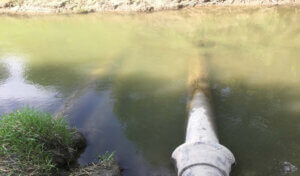
Drinking Water Supply Threatened by Damaged Dam
Conservation and public safety don’t frequently coincide. Across Iowa, however, a growing movement to remove or modify dangerous and deteriorating low-head dams in rivers and streams are in full swing. The impact of this campaign aims to benefit both nature and the general public.
Lenon Mill Dam, located on the Middle Raccoon River near Panora, is one of those targeted structures. Originally built from heavy timbers prior to the U.S. Civil War, the structure underwent several renovations throughout the years as technology advanced. Eventually, this resulted in a concrete cap being placed over the top and back face of the dam to protect the dam’s structural integrity.
After heavy rains fell across the watershed, the river rose almost seven feet in less than ten hours. During this major flood event a section of the concrete cap broke off, making the structure extremely vulnerable and susceptible to further damage in the near future. To head off catastrophic failure, Panora city leaders turned to Snyder & Associates to come up with a short-term solution that could withstand high waters and be assembled rapidly — all while staying within the city’s funding limitations.
To make the situation more daunting, the Middle Raccoon River provides the city’s main water source and the damage to Lenon Mill Dam produced a significant risk to their drinking water supply. If another flooding event were to occur before the damaged section was repaired, there was a real possibility of complete dam failure and loss of water supply.
Natural Rock Used to Reinforce Dam Structure
To avoid the dire scenario posed by a dam breach, our team proposed reinforcing the dam with a native stone structure sloping away from the dam’s downstream face. These stones would fill the area where the concrete cap broke loose and also strengthen the overall stability of the structure. The reinforcement stones ranged from 300 pounds to over six tons. They were positioned to taper approximately 50 feet downstream from the dam, with the toe of the taper anchored into the river bedrock.
This tapering effect eliminates two deadly aspects of the dam, the five-foot drop from the crest and the recirculating currents that form in the systems plunge pool. The creation of these rock rapids have the added benefit of increasing aeration of the water, in turn creating a more suitable environment for fish and other aquatic wildlife.
Our team also recommended plugging a six-foot-wide gap in the dam that remained from a no longer used penstock. At one time, the penstock was used to direct waters for onsite mill operations. Prior attempts to fill the hole with wood and stone lodged into the opening proved unsuccessful. To slow the passing water, our team recommended using a special blend of concrete chemically enhanced to “self-settle” and withstand the flowing water. This method was the best and most cost-effective solution to cast and fill the problematic hole.
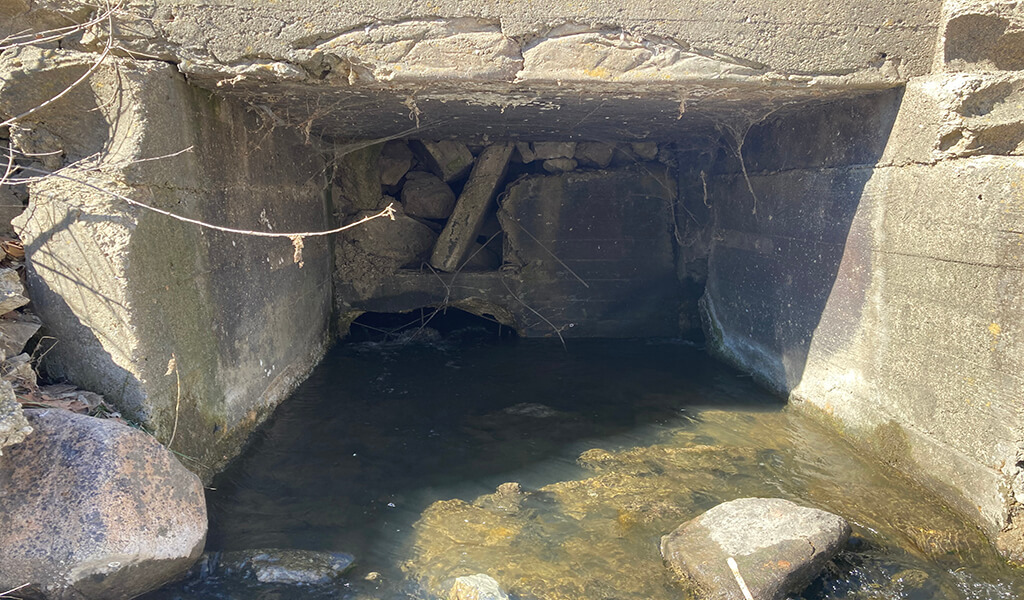
Close-up view of dam penstock filled with loose stone and wood pieces.
Structural Repairs Support Long-Term Plans for Natural Rapids
While this structure remains stable and continues to protect the community water source, the ultimate goal is complete removal of the low-head dam in the near future. The City of Panora, Iowa Department of Natural Resources (DNR), and Guthrie County Conservation are in the process of developing a concept, design, and funding options for a future long-term solution. The repairs implemented by the Snyder & Associates team were designed to conform to the long-term goal of establishing natural rapids in the location while still reinforcing the existing structure.
